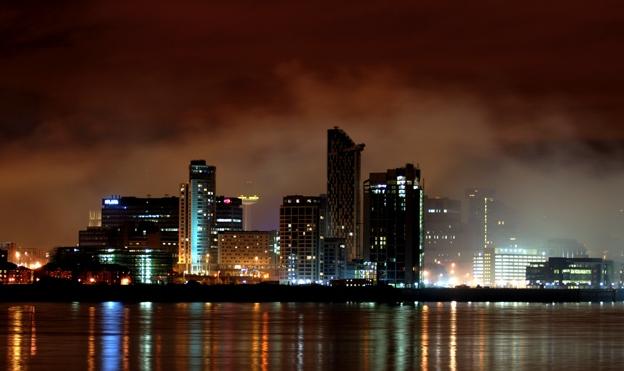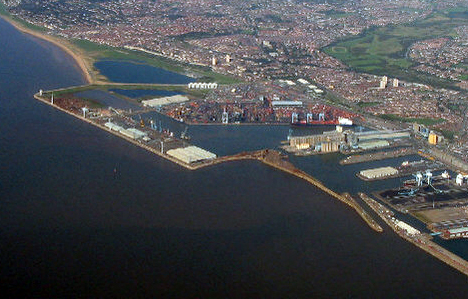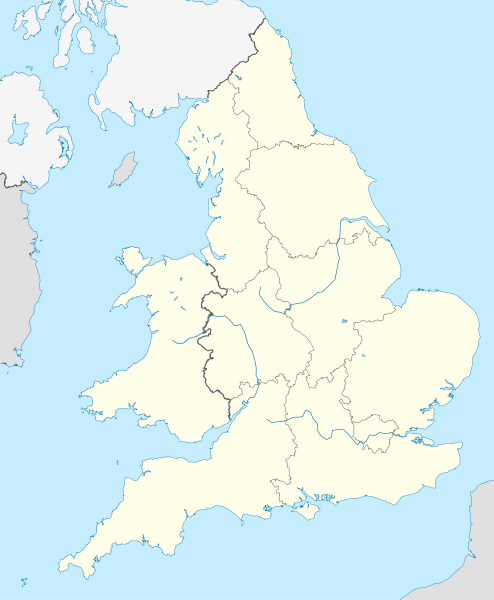|
List Of Settlements In Merseyside By Population
This is a list of settlements in Merseyside by population based on the results of the 2011 census. The next United Kingdom census will take place in 2021. In 2011, there were 20 built-up area subdivisions with 5,000 or more inhabitants in Merseyside, shown in the table below. Administrative boundaries Table outlines many of the county's settlements, and is formatted according to their metropolitan borough. Population ranking Notes: * † - Huyton and Halewood included in Liverpool count for ONS subdivision area purposes. Liverpool borough-only figures at 2001/2011 censuses were 439,473 and 466,415. * ‡ - Garswood with Downall Green fall under the Metropolitan Borough of St Helens in Merseyside. These make up the western portion of Ashton-in-Makerfield, which itself is in the Metropolitan Borough of Wigan in neighbouring Greater Manchester. See also * Merseyside * Liverpool built-up area References External links ONS Census website {{Settlements in En ... [...More Info...] [...Related Items...] OR: [Wikipedia] [Google] [Baidu] |
Liverpool
Liverpool is a city and metropolitan borough in Merseyside, England. With a population of in 2019, it is the 10th largest English district by population and its metropolitan area is the fifth largest in the United Kingdom, with a population of 2.24 million. On the eastern side of the Mersey Estuary, Liverpool historically lay within the ancient hundred of West Derby in the county of Lancashire. It became a borough in 1207, a city in 1880, and a county borough independent of the newly-created Lancashire County Council in 1889. Its growth as a major port was paralleled by the expansion of the city throughout the Industrial Revolution. Along with general cargo, freight, and raw materials such as coal and cotton, merchants were involved in the slave trade. In the 19th century, Liverpool was a major port of departure for English and Irish emigrants to North America. It was also home to both the Cunard and White Star Lines, and was the port of registry of the ocean li ... [...More Info...] [...Related Items...] OR: [Wikipedia] [Google] [Baidu] |
Hoylake
Hoylake is a coast, seaside town in the Metropolitan Borough of Wirral, Merseyside, England. It is at the north west of the Wirral Peninsula, near West Kirby and where the River Dee, Wales, River Dee meets the Irish Sea. Historic counties of England, Historically part of Cheshire, the Domesday Book of 1086 recorded it within the Hundreds of Cheshire, Hundred of Wilaveston. At the 2001 United Kingdom census, 2001 census, the population of Hoylake was 5,710 of a total population of 13,042, as part of the Hoylake and Meols (ward), Hoylake and Meols local government Ward (electoral subdivision), ward. By the time of the 2011 United Kingdom census, 2011 census specific population figures for Hoylake were no longer maintained. The total population for the Hoylake and Meols Ward at this census was 13,348. History In 1690, William III of England, William III set sail from Hoylake, then known as ''Hyle'' or ''High-lake'', with a 10,000-strong army to Ireland, where his army was to t ... [...More Info...] [...Related Items...] OR: [Wikipedia] [Google] [Baidu] |
Aigburth
Aigburth () is a suburb of Liverpool, England. Located to the south of the city, it is bordered by Dingle, Garston, Mossley Hill, and Toxteth. Etymology The name Aigburth comes from Old Norse ''eik'' and ''berg'', meaning ''oak-tree hill''. The name can be interpreted as "hill where oak trees grow" and is a hybrid place-name: the first part of the name is from Old Norse ''eik'' meaning "oak tree" (which is found in Eikton in Cumbria and Eakring in Nottinghamshire) and Old English ''beorg'' or ''berg'' meaning ''hill'' but as there is no real hill in Aigburth the sense here is more likely to be ''rising ground''. Beorg or berg is more usually rendered ''-borough'' (as in Barlborough in Derbyshire) or more rarely as ''-barrow'' (as in Backbarrow in Cumbria). The name was also recorded as ''Eikberei'' in an undated record. A possible other meaning of Aigburth is Aiges' Berth, meaning the place where the Viking Aiges berthed his long boat. This is plausible because Aigburth is ... [...More Info...] [...Related Items...] OR: [Wikipedia] [Google] [Baidu] |
Liverpool City Centre
Liverpool city centre is the commercial, cultural, financial and historical centre of Liverpool, England. The inner city districts of Vauxhall, Liverpool, Vauxhall, Everton, Liverpool, Everton, Edge Hill, Merseyside, Edge Hill, Kensington, Liverpool, Kensington and Toxteth mark the border with Liverpool city centre which consists of the L1, L2 and L3 postal districts. The population of the city centre has grown dramatically to around 36,000. Liverpool was granted borough status in 1207, and the original seven streets of the settlement can now be found within the commercial district of Liverpool city centre. Many of Liverpool's most famous landmarks are located in the city centre and in 2006 Liverpool was visited by 625,000 international visitors alone, making it the fourth most visited city in the United Kingdom. Six areas within Liverpool city Centre form the Liverpool Maritime Mercantile City which is a former UNESCO designated World Heritage Site. Liverpool city centre is o ... [...More Info...] [...Related Items...] OR: [Wikipedia] [Google] [Baidu] |
Merseyside Numbered Districts
Merseyside ( ) is a metropolitan and ceremonial county in North West England, with a population of 1.38 million. It encompasses both banks of the Mersey Estuary and comprises five metropolitan boroughs: Knowsley, St Helens, Sefton, Wirral and the city of Liverpool. Merseyside, which was created on 1 April 1974 as a result of the Local Government Act 1972, takes its name from the River Mersey and sits within the historic counties of Lancashire and Cheshire. Merseyside spans of land. It borders the ceremonial counties of Lancashire (to the north-east), Greater Manchester (to the east), Cheshire (to the south and south-east) and the Irish Sea to the west. North Wales is across the Dee Estuary. There is a mix of high density urban areas, suburbs, semi-rural and rural locations in Merseyside, but overwhelmingly the land use is urban. It has a focused central business district, formed by Liverpool City Centre, but Merseyside is also a polycentric county with five metropoli ... [...More Info...] [...Related Items...] OR: [Wikipedia] [Google] [Baidu] |
Merseyside
Merseyside ( ) is a metropolitan county, metropolitan and ceremonial counties of England, ceremonial county in North West England, with a population of List of ceremonial counties of England, 1.38 million. It encompasses both banks of the Mersey Estuary and comprises five metropolitan boroughs: Metropolitan Borough of Knowsley, Knowsley, Metropolitan Borough of St Helens, St Helens, Metropolitan Borough of Sefton, Sefton, Metropolitan Borough of Wirral, Wirral and the city of Liverpool. Merseyside, which was created on 1 April 1974 as a result of the Local Government Act 1972, takes its name from the River Mersey and sits within the historic counties of Lancashire and Cheshire. Merseyside spans of land. It borders the ceremonial counties of Lancashire (to the north-east), Greater Manchester (to the east), Cheshire (to the south and south-east) and the Irish Sea to the west. North Wales is across the Dee Estuary. There is a mix of high density urban areas, suburbs, semi-rur ... [...More Info...] [...Related Items...] OR: [Wikipedia] [Google] [Baidu] |
List Of Urban Areas In The United Kingdom
This is a list of the most populous urban areas in the United Kingdom based on the United Kingdom Census 2011, 2011 census, as defined by the Office for National Statistics (ONS). Definition The methodology used by ONS in 2011 is set out in ''2011 Built-up Areas – Methodology and Guidance'', published in June 2013. When ONS reported the results of the 2011 UK census, it used the term "built-up area" rather than the term "urban area" as used in previous censuses. ONS states, however, that the criteria used to define "built-up area" have not changed: In reporting the United Kingdom Census 2001, 2001 census, ONS gave a clearer definition of the term "built-up" as follows: Most populous The list below shows the most populated urban areas in the United Kingdom as defined by the Office for National Statistics (ONS), but as readily referenced at Citypopulation.de. The list includes all urban areas with a population in excess of 100,000 at the 2011 census. Map See also *City ... [...More Info...] [...Related Items...] OR: [Wikipedia] [Google] [Baidu] |
United Kingdom Census 2021
The decennial 2021 censuses of England and Wales and of Northern Ireland took place on 21 March 2021, and the census of Scotland took place on 20 March 2022. The censuses were administered by the Office for National Statistics (ONS) in England and Wales, by the Northern Ireland Statistics and Research Agency (NISRA) in Northern Ireland, and by the National Records of Scotland in Scotland. These were the first British censuses for which most of the data was gathered online, and two of them went ahead despite the COVID-19 pandemic, in part because the information obtained will assist government and public understanding of the pandemic's impact. Enumeration in Scotland was postponed, and took place in 2022, the plans for it having been delayed because of the pandemic. The censuses in 2021 and 2022 follows on from Beyond 2011, a project by the UK Statistics Authority to assess the value, cost, and alternatives to a census in 2021. The project recommended a census in 2021, and amongst ... [...More Info...] [...Related Items...] OR: [Wikipedia] [Google] [Baidu] |
Census In The United Kingdom
Coincident full censuses have taken place in the different jurisdictions of the United Kingdom every ten years since 1801, with the exceptions of 1941 (during the Second World War), Ireland in 1921/Northern Ireland in 1931,https://www.nisra.gov.uk/sites/nisra.gov.uk/files/publications/1926-census-preliminary-report.PDF and Scotland in 2021. In addition to providing detailed information about national demographics, the results of the census play an important part in the calculation of resource allocation to regional and local service providers by the UK government. 2021 United Kingdom census, The most recent UK census took place in England, Wales and Northern Ireland on 21 March 2021. Because of the COVID-19 pandemic in the United Kingdom, COVID-19 pandemic, the census in Scotland was delayed to 20 March 2022. History Tax assessments (known in the later Empire as the indiction) were made in Britain in Roman Britain, Roman times, but detailed records have not survived. In the 7th ... [...More Info...] [...Related Items...] OR: [Wikipedia] [Google] [Baidu] |
United Kingdom Census 2011
A Census in the United Kingdom, census of the population of the United Kingdom is taken every ten years. The 2011 census was held in all countries of the UK on 27 March 2011. It was the first UK census which could be completed online via the Internet. The Office for National Statistics (ONS) is responsible for the census in England and Wales, the General Register Office for Scotland (GROS) is responsible for the census in Scotland, and the Northern Ireland Statistics and Research Agency (NISRA) is responsible for the census in Northern Ireland. The Office for National Statistics is the executive office of the UK Statistics Authority, a non-ministerial department formed in 2008 and which reports directly to Parliament. ONS is the UK Government's single largest statistical producer of independent statistics on the UK's economy and society, used to assist the planning and allocation of resources, policy-making and decision-making. ONS designs, manages and runs the census in England an ... [...More Info...] [...Related Items...] OR: [Wikipedia] [Google] [Baidu] |
Halewood
Halewood is a town in the Metropolitan Borough of Knowsley in Merseyside, England. It lies near the city of Liverpool's southeastern boundary, bordered by the suburbs of Netherley, Hunt's Cross and Woolton. Historically a part of Lancashire, Halewood originated as a small village that later became absorbed by residential development as a suburb of Liverpool. Between the 1950s and 1970s the area developed as a housing overspill for the city. Halewood's population during this time increased from just over 6,000 to over 19,000 people. At the 2001 Census, the population of the civil parish was 20,309, remaining similar at the 2011 Census. The combined population of Halewood's four local government wards was 29,217. History The township of Halewood lies between the old course of Ditton Brook in the north and Rams Brook in the south. Disputes over the manor lands of Halewood between the Ireland and Holland families began in the 13th Century and were to be ongoing for some time. ... [...More Info...] [...Related Items...] OR: [Wikipedia] [Google] [Baidu] |
Garswood
Garswood is a village in the Metropolitan Borough of St. Helens, Merseyside, England. The village is within the civil parish of Seneley Green. The parish was historically part of Ashton-in-Makerfield until 1974 boundary changes. History Within the boundaries of the historic county of Lancashire, Garswood is from Old English gyr “fir” and ''wudu'' "wood", the fir wood. The name was recorded as ''Gratiswode'' (undated). Along with extensive farming, Garswood has seen much coal mining activity in its past, due to strata running up to an adjacent fault causing much outcropping of coal seams. Local mines included Garswood Park (which operated 1868–1880), Seneley Green (1869-1880), Birchenheds (1880-1925) and Park (1869-1960). Mining has taken place using (comparatively) shallow shafts and many drifts. The last drift mine in the Garswood area (in neighbouring Golborne), Quaker House Colliery, closed in 1992. Extensive opencast mining has taken place in more recent times and st ... [...More Info...] [...Related Items...] OR: [Wikipedia] [Google] [Baidu] |





